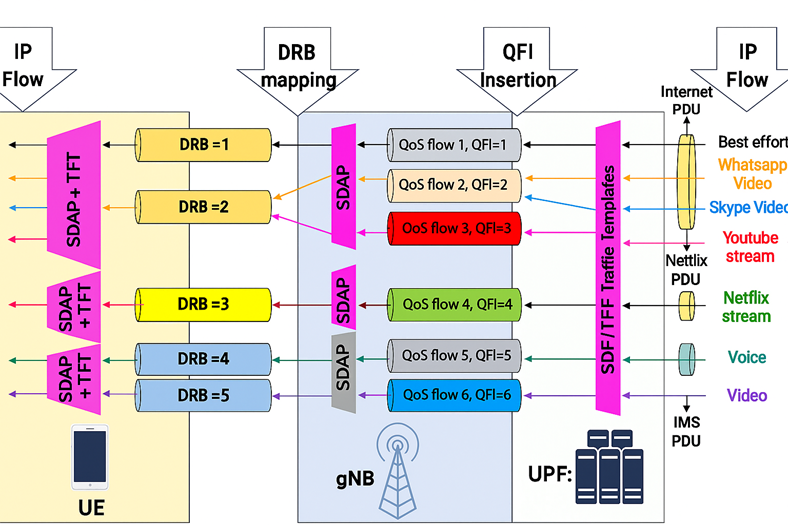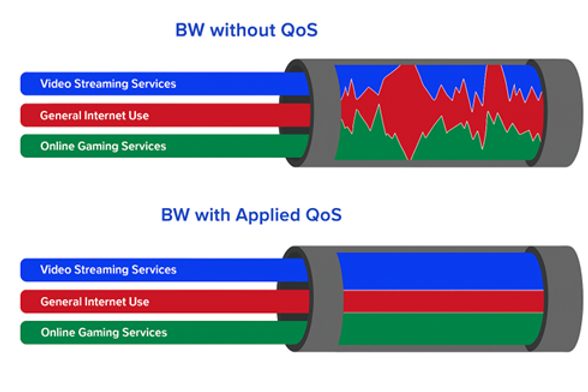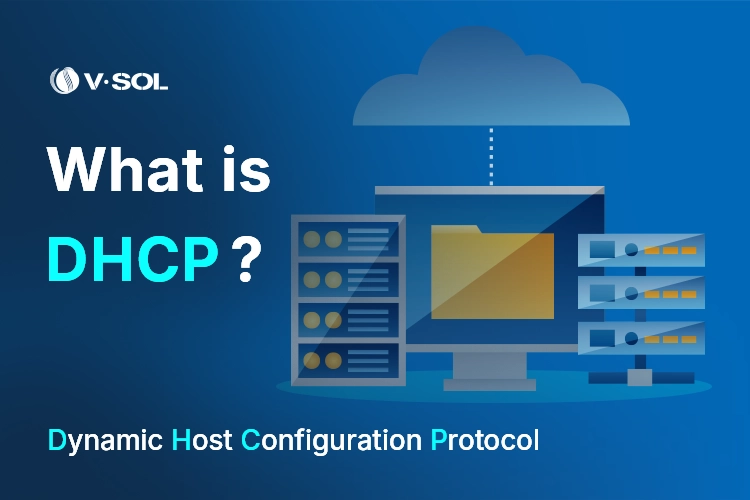Are you tired of your favorite shows buffering just when the action gets exciting? Your streaming experience depends a lot on how well your network handles data.
That’s where Network QoS, or Quality of Service, comes in. It’s the secret tool that can make your videos play smoothly without annoying interruptions. You’ll discover how Network QoS works and how it can transform your streaming into a seamless, enjoyable experience.
Keep reading to find out how to take control of your connection and never miss a moment again.
What Is Network Qos
Network QoS means Quality of Service. It helps control internet traffic.
QoS makes sure streaming videos do not lag or buffer.
How Network Qos Works
QoS gives priority to important data like video streams. It stops less important data from slowing down the stream.
This helps keep video clear and smooth for viewers.
- Data is sorted by importance
- High priority data gets faster delivery
- Low priority data waits in line
Why Network Qos Is Important For Streaming
Streaming needs steady internet speed. QoS helps keep this speed steady.
Without QoS, streaming can be slow or stop often.
- Reduces video buffering
- Improves video quality
- Prevents interruptions
Common Qos Techniques
Different methods help manage traffic and improve streaming.
- Traffic shaping limits slow data
- Prioritization sends video data first
- Bandwidth reservation saves space for video
Devices That Use Network Qos
Many devices use QoS to keep streaming smooth. These include routers and switches.
QoS settings can be changed to fit different needs.
- Home routers
- Business switches
- Streaming servers
Why Qos Matters For Streaming
Streaming needs a steady and fast network connection. Quality of Service (QoS) helps keep the stream smooth and clear.
Without QoS, videos may pause or show low quality. It controls how data flows to reduce delays and interruptions.
Improves Video Quality
QoS gives priority to video data over other traffic. This helps keep the video sharp and clear.
It reduces buffering, so the video plays without stopping. Viewers get a better watching experience.
Reduces Lag And Buffering
Streaming needs constant data flow. QoS manages network traffic to avoid delays.
This means less waiting time for videos to load. Lag and buffering happen less often.
Manages Network Traffic Efficiently
Many devices use the same network at once. QoS decides which data is most important.
This way, streaming data gets enough bandwidth. Other activities do not slow down the video.
Ensures Stable Connection
QoS keeps the connection steady during streaming. It prevents sudden drops in speed.
A stable connection helps the video play smoothly from start to end.
Common Streaming Issues Without Qos
Streaming videos can be hard without good network control. Quality of Service (QoS) helps manage internet traffic for smooth streaming.
Without QoS, streaming faces many problems. These problems make watching videos frustrating and slow.
Buffering Delays
Buffering happens when the video stops to load more data. This delay breaks the watching experience.
Without QoS, other internet traffic can slow down streaming. This makes the video pause often.
Poor Video Quality
Video quality drops when the network is busy. The picture becomes blurry or pixelated.
QoS helps keep enough bandwidth for streaming. Without it, video apps lower quality to keep playing.
Interrupted Playback
Playback can stop suddenly if the network is unstable. This causes the video to freeze or crash.
QoS gives priority to streaming data. Without QoS, other devices may block streaming and cause interruptions.

Credit: www.copperpodip.com
Key Qos Metrics For Streaming
Network Quality of Service (QoS) is important for smooth streaming. It helps keep video and audio clear.
Several key metrics measure QoS and affect streaming quality directly. Understanding these helps improve user experience.
Latency
Latency is the delay between sending and receiving data. Low latency means faster streaming response.
High latency causes lag and delays in live streams. It hurts real-time communication and video calls.
Jitter
Jitter is the variation in packet arrival time. It makes streaming uneven and choppy.
Stable jitter means smooth streaming. Large jitter causes buffering and breaks in video or audio.
Packet Loss
Packet loss happens when data packets do not reach their destination. It causes missing video frames or sound.
Low packet loss is essential for good streaming quality. High packet loss causes freezes and poor playback.
Bandwidth
Bandwidth is the maximum data transfer rate of a network. More bandwidth means better streaming quality.
Insufficient bandwidth causes buffering and low video resolution. It limits how much data can flow at once.
- Higher bandwidth supports higher video quality
- Bandwidth needs vary by streaming type
- Stable bandwidth prevents interruptions
How Qos Boosts Streaming Performance
Network Quality of Service (QoS) helps improve streaming by managing data flow. It ensures smooth video and audio playback.
QoS controls how data travels on the network. This reduces delays and interruptions during streaming.
Traffic Prioritization
QoS gives priority to streaming data over less important traffic. This means video and audio get sent first.
By prioritizing streaming traffic, QoS reduces buffering and lag. It keeps the stream smooth and clear.
Bandwidth Management
QoS manages how much bandwidth each app or device uses. It stops one user from using all the network capacity.
With good bandwidth control, streaming apps get enough data speed. This prevents slowdowns during high use times.
- Limits bandwidth for non-streaming apps
- Reserves bandwidth for streaming devices
- Adjusts bandwidth based on network load
Reducing Network Congestion
QoS helps avoid network congestion by managing data traffic smartly. It stops too many data packets from crowding the network.
Less congestion means fewer delays and lost packets. This keeps streaming fast and reliable for all users.

Credit: en.community.sonos.com
Implementing Qos On Home Networks
Network Quality of Service (QoS) helps control traffic on your home network. It ensures streaming videos stay smooth and clear.
With QoS, you can give priority to important devices and apps. This reduces buffering and lag during streaming.
Router Settings
Your router is the main tool for setting up QoS. Most modern routers have built-in QoS features you can turn on.
Access your router’s admin page to find QoS settings. You can then set rules for how your network handles traffic.
- Open your router’s web interface using its IP address
- Look for the QoS or Traffic Control section
- Enable QoS and save the settings
- Set bandwidth limits or priorities based on device or app
Device Prioritization
Device prioritization lets you choose which devices get faster network speeds. This helps streaming devices work better.
You can list your smart TV, streaming box, or computer as high priority. Other devices like phones or tablets get lower priority.
- Select devices by their MAC or IP address in the router settings
- Assign a priority level such as high, medium, or low
- Make sure streaming devices have the highest priority
- Save changes and restart your router if needed
Using Qos Software
Some routers or third-party apps offer QoS software tools. These tools help manage traffic with easy interfaces.
QoS software can monitor your network and adjust priorities automatically. This keeps streaming smooth without manual changes.
- Install QoS software on your router or computer
- Set streaming apps as high priority in the software
- Use software dashboards to track network traffic
- Update software regularly for best performance
Enterprise Qos Strategies For Streaming
Quality of Service (QoS) helps keep streaming smooth in large networks. It controls how data moves through the system.
Enterprises use different strategies to make sure video streams do not lag or freeze.
Policy-based Qos
Policy-Based QoS sets rules to manage network traffic. It decides which data gets priority.
These policies help streaming traffic move faster than less important data.
- Define priority levels for streaming packets
- Assign bandwidth limits to different services
- Use access control lists to filter traffic
Traffic Shaping
Traffic shaping controls the flow of data to reduce congestion. It smooths out bursts in streaming traffic.
This method helps avoid delays and packet loss during peak usage times.
- Delay lower priority traffic when needed
- Limit bandwidth for non-streaming data
- Ensure steady data flow for video streams
Monitoring And Analytics
Monitoring tracks network performance in real time. It detects issues affecting streaming quality.
Analytics help identify patterns and improve QoS settings over time.
- Watch bandwidth use and latency
- Detect packet loss and jitter
- Adjust policies based on data trends
Troubleshooting Qos For Streaming
Network Quality of Service (QoS) helps prioritize streaming traffic. This ensures smooth video and audio playback.
Troubleshooting QoS issues can fix slow or choppy streams. It involves checking network settings and performance.
Identifying Bottlenecks
Bottlenecks slow down streaming and cause buffering. They can happen in routers, switches, or internet links.
Look for devices with high CPU use or full bandwidth. Check if many devices share the same connection.
- Check router CPU and memory usage
- Monitor bandwidth on network devices
- Identify heavy users or apps on the network
- Test internet speed during streaming
Adjusting Qos Rules
QoS rules control which traffic gets priority. Adjust rules to give streaming higher priority over other data.
Set rules based on IP, port, or application type. Make sure rules are not conflicting or too strict.
- Prioritize streaming ports and protocols
- Limit bandwidth for non-streaming apps
- Use simple and clear QoS rules
- Update rules after network changes
Testing Streaming Performance
Test streaming to see if QoS changes help. Use tools to measure buffer time and video quality.
Try streaming from different devices. Check if playback is smooth and without interruptions.
- Run speed tests before and after changes
- Watch streaming videos on various devices
- Note any buffering or quality drops
- Adjust QoS rules if problems persist
Future Trends In Qos For Streaming
Quality of Service (QoS) is key for smooth streaming. It controls video and audio quality online.
New technologies will change how QoS works to give better streaming experiences.
Ai-driven Qos
Artificial intelligence helps networks adjust QoS in real time. It predicts traffic and fixes issues fast.
AI can learn from past data to improve streaming quality automatically without human help.
- Predict network congestion before it happens
- Automatically allocate bandwidth where needed
- Detect and fix streaming glitches quickly
5g And Qos Enhancements
5G networks offer faster speeds and lower delays. This lets streaming services provide higher quality videos.
5G supports better QoS by prioritizing streaming data over other traffic on the network.
- Reduced buffering with faster data transfer
- Improved video quality even on mobile devices
- More stable connections in crowded areas
Edge Computing Impact
Edge computing moves data processing closer to users. This lowers delays and improves QoS for streaming.
By handling tasks near the user, edge computing helps avoid slow networks and reduces load on central servers.
- Faster video loading times
- Less network congestion
- Better support for live streaming events
Credit: medium.com
Frequently Asked Questions
What Is Network Qos In Streaming?
Network QoS, or Quality of Service, is a technology that manages network resources for streaming. It prioritizes data packets to ensure smooth and uninterrupted video or audio playback. By optimizing bandwidth and reducing latency, QoS enhances the overall streaming experience for users.
How Does Qos Improve Streaming Quality?
QoS improves streaming quality by prioritizing critical data packets over less important ones. This ensures smoother playback and reduces buffering. It allocates sufficient bandwidth for streaming applications, minimizing interruptions. By managing network traffic effectively, QoS enhances the viewing or listening experience.
Why Is Qos Important For Streaming?
QoS is crucial for streaming because it ensures consistent and high-quality playback. By prioritizing streaming traffic, it reduces buffering and latency issues. This results in a smoother experience, especially during peak times. Without QoS, network congestion can lead to poor streaming performance.
Can Qos Prevent Buffering Issues?
Yes, QoS can significantly reduce buffering issues. It prioritizes streaming data, ensuring sufficient bandwidth allocation. By managing network traffic efficiently, QoS minimizes packet loss and delays. This leads to a smoother streaming experience with fewer interruptions and reduced buffering times.
Conclusion
Good network QoS helps streaming stay smooth and clear. It stops buffering and keeps videos playing fast. Prioritizing traffic means important data moves first. This leads to better picture and sound quality. Simple steps improve your streaming experience a lot.
Focus on managing bandwidth and setting rules right. Enjoy your favorite shows without annoying pauses. Quality of Service is key for happy streaming moments. Keep your network balanced for the best results. Streaming works best when your connection works well.
20 min read






